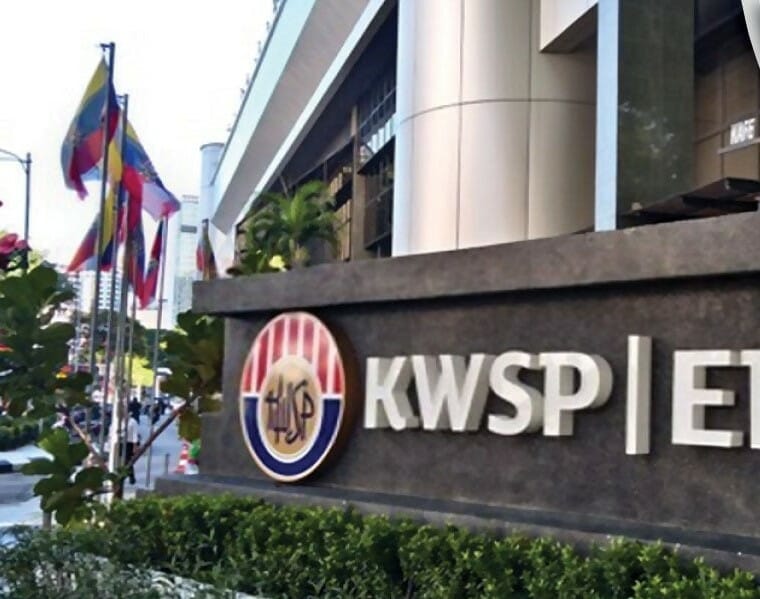
Published by BusinessToday, image by BusinessToday.
In his speech officiating the opening of the Kwasa Damansara EPF Tower on May 8, Prime Minister Dato’ Seri Anwar Ibrahim called on the country’s national private sector retirement funds manager to increase its domestic investments to 70% (from the current 64%).
The Employees Provident Fund (EPF)’s prudent and cautious investment outlook and strategies have consistently resulted in sustained robust returns for account holders/contributors/members throughout the business cycles.
This include EPF’s overseas investments which comprised 36% of the total as of December 2022 – as part of the diversification thrust and dimension of the strategic asset allocation (SAA) framework which informs and guides the outlook and strategies.
The call by the Prime Minister to increase domestic investments – which entails simultaneously decreasing overseas investments – has been met with scepticism by experts (“Contributors will lose out if EPF invests less abroad, say experts”, Free Malaysia Today, May 9, 2023).
There’s the worry that EPF would be “deployed” to prop up our stock market which has been a laggard, overall, for well over three years now since the 12-year bull run (if measured by the Kuala Lumpur Composite Index/KLCI and not the return on equity/ROE) ended in 2020 with the Sheraton Move (breaching 1500 points by falling below).
Under such a scenario, EPF can be used to counter-balance the short-run overreaction phenomenon “typical” in our stock market vis-à-vis retail investors who are already “ageing” relative to the replacement pool rate, as an example.
But apart from such a highly unlikely situation, we already have ValueCap reactivated in 2015 to inject funds into underperforming stocks (to complement the share buybacks of the majority shareholders of the listed companies).
There’s no reason at all for the government (any for that matter) to “instruct” EPF in this direction.
Furthermore, further structural reforms of our stock market – which builds on the liberalisation of the 27 services sub-sectors by a former Prime Minister known for his technocratic aptitude, including the subsuming of the Bumiputera equity condition under the public shareholding spread (i.e., 50% or half of the 25% listing requirement) which can always be readily loosened if there’re not enough of such takers – will ensure catching-up/matching competitiveness with our regional peers and beyond and position us to attract higher capital inflows.
However, it’s still plausible that the government expects EPF to increase its equity investments in our stock market. By extension, there’s the worry of a lower rate of returns domestically as compared with overseas investments.
Nonetheless, such worry is misplaced.
The Prime Minister is very clear on the key strategic areas that EPF should focus on, namely food security, youth employment and start-ups (mainly non-listed) which go beyond the stock market.
The Prime Minister has made a right/highly commendable – albeit controversial – call for the following reasons:
- The figure quoted by the Prime Minister is 70% which by default means that overseas investments will still be at a significant 30% at the minimum.
In other words, the Prime Minister’s call doesn’t portend the diminution of the strategic and critical importance of overseas investments (as there’ll still be much space for overseas investments in the context of the growth of EPF’s total assets).
But merely a “minor” re-balancing/slight tilting of the current approach of the SAA framework towards domestic priorities and needs.
Given the looming “recessionary” trends in the West (US and Europe), not least as pressured by the consecutive/aggressive interest rate hikes, the call by the Prime Minister is very timely.
- Whilst a low interest rate environment has allowed EPF to continue delivering, even despite the disruptions caused by the Covid-19 pandemic (which can be characterised as Gibson’s paradox whereby there’s an observed long-run positive correlation between interest rates and the price levels as highlighted in EMIR Research article, “EPF in a low interest rate environment”, February 24, 2022), the expected downturn in the US, UK and the EU (caused by interest rate hikes) will put a dent on the overseas investments.
Take Germany, where EPF has a presence, for example.
There’re reliable signs that Germany, the EU’s leading member-state, is heading towards an imminent slowdown as indicated by its manufacturing PMI (Purchasing Manager’s Index) which has been consistently below the 50-mark (indicating contraction of industrial activity) since July 2022.
According to Germany’s statistics department, overall exports decreased by 5.2% in March 2023, with exports falling to the respective destinations as follows:
- EU by 6.2%,
- US by 10.9% and
- China by 9.3%.
It’s expected that the trend is set to persist in the months ahead.
And despite the EU’s commitment to spend EUR1.8 trillion under the “NextGenerationEU” Recovery Plan, Germany’s obsession with the “fiscal brake” (schwarze Null/black zero – balanced budget) and (re)imposition of a debt reduction plan (as per the restoration of the Stability and Growth Pact’s fiscal “rules”) for “highly indebted” member-states could/might dilute/dampen the extent of the funding provisions (with the exception of the reconstruction of Ukraine – as a candidate country).
Ironically, these “internal contradictions” (arising from lack of a proper fiscal union) would increase the supra-national entity’s own indebtedness.
By comparison, the US under President Biden is implementing a concerted industrial policy strategy via CHIPS (CHIPS and Science Act) and IRA (Inflation Reduction Act), etc. to revive the economy.
A downturn in the US would be primarily caused by the determination of the Federal Reserve to create unemployment (and secondarily by Republican intransigence over the “debt ceiling”).
- The Prime Minister, therefore, has the foresight to envision that EPF’s priorities could do with some re-balancing towards increasing its domestic investments in food security youth employment, and start-ups, etc.
This would help to cushion the impact of the global “recessionary” trends on our economy which is also expected to enter into a downturn as a consequence.
With the resumption of the normalisation process by Bank Negara via OPR (Overnight Policy Rate) hikes, this will definitively impact on private spending (investment, consumption).
In this, EPF would be well-poised to inject non-governmental spending on behalf of the government and help to counteract the decline in aggregate demand in the economy without necessarily burdening the national debt at the same time whilst ensuring that the rakyat are not only the beneficiaries of thereturns (dividends) but the investments (multiplier effects) as well.
- At the same time, this would help strengthen our economic fundamentals by enhancing and bolstering liquidity in the financial system given the deliberate monetary tightening policy by Bank Negara.
As Bank Negara doesn’t do quantitative easing (QE) understood as wholesale purchases of government bonds (Malaysian Government Securities/MGS) exceeding 10% of the total of any given issuance by the Treasury, EPF can complement our central bank by increasing its bond holdings from the secondary markets, including under ISCAP (Institutional Securities Custodian Programme) for short- to medium-term duration.
This enhances liquidity in the financial system by allowing primary bond holders to release captive holdings (held-to-maturity/HTM) in return for a fee (functioning as investment return) whilst enabling secondary purchasers such as EPF to benefit from coupon rate arbitrage in terms of the differences between current and previous issuances.
As such, EPF can mirror a similar role to ValueCap but in the bond market by keeping yields lower than they would be.
By extension, repatriating funds from overseas as a necessary consequence of the divestments could help strengthen the RM’s fundamentals and place our currency on a pathway or trajectory towards appreciation below the RM4.30 mark.
- Re-balancing portfolios in terms of the domestic-overseas divide would also compel EPF to further enhance and upgrade its overseas investment (sub)strategies.
These include divestments from some overseas countries to other locations, e.g., from the EU (Germany and France) to Asia-Pacific (e.g., member-states of the CPTPP, RCEP).
This entails coordinating and synchronising investment (capital account) with trade (current account) strategies as a policy vision and approach.
For example, EPF could invest in the property sector, e.g., in the form of the Real Estate Investment Trusts (REITS) where demand for our furniture products is very strong or high, e.g., in China and Australia.
In addition, EPF could/should invest in, e.g., corn production from member-states like Chile (as part of our food security diversification strategy) as well as in the copper mining sector (to diversify our lithium sources and boost local production of lithium-ion battery cells as the base/backbone for the EV sectoral growth – instead of a short-cut approach of providing tax exemptions, including for fully–imported completely built units (CBUs) which doesn’t necessarily lower the costs for consumers.
- It can’t be strongly emphasised enough that the call could be seen and conceptualised as part of the structural transformation of the economy under Malaysia Madani which seeks to, among other things, promote a more pro-people/rakyat-oriented economy.
By creating the multiplier effect, including increasing employment, it’ll directly increase the number of contributors and, by extension, the total assets accumulated which in turn will indirectly contribute to higher yields and returns overall.
- What shouldn’t be overlooked in making the investments (whether domestic or overseas) is the need to implement and execute the IOOI (Input, Output, Outcome, Impact) model.
This means that in all investment decision-making and project management, we should go beyond calculus or projection of returns (albeit from different formulas but still set within the same limited framework or constraints, e.g. internal rate of return/IRR compared/paired with net present value/NPV).
The proposed investments must also yield long-term multiplier and sustainable benefits to the broader society – entailing multidimensional perspectives/paradigms and lateral analysis/thinking.
Essentially, the IOOI model is cost-benefit analysis (CBA) that’s heightened/expanded and more dynamic.
For example, EPF’s investments in food security schemes as recommended by the Prime Minister are eminently in consonant with the IOOI model.
Investment in food security isn’t merely a matter of setting aside a certain percentage of allocation which in turn is channelled:
- directly – via farming/agriculture projects; and
- indirectly – via private equity or special/dedicated government bonds as in Malaysian Government Securities (Food Security).
But precisely in applying the IOOI model for transformative (potential) impacts and outcomes, EPF can specifically target smallholder farming/agriculture (i.e., the number of producers) – where there’s a critical need for sustainable funding/financing, including especially for adoption of digitalisation/4IR.
This will contribute to ensuring that the Input/I (allocation/capital) and Output/O (immediate/short-term results) contributes to the wider and concrete/tangible Outcome/O (sustainable, mid- to longer-term gains) in the form of higher self-sufficiency levels (SSLs) in red meat and dairy products (because of the greater spread of producers which mitigates concentration risk), for example, in the form of a specific targets (say, to 70%) over the medium-term (say, 3-5 years).
The Impact/I (transformational or realised results of the mid- to longer-term gains), therefore, would be the multiplier and spill-over vertical and horizontal effects arising from the Outcome/O such as generation of employment (e.g., agropreneurs, farm/plantation workers) across the supply chain alongside intensifying its localisation.
This, ideally, should be accompanied by digitalisation/4IR of the supply chain – from farm to fork (vertical) – and from production to certification/quality assurance (horizontal) processes.
Ultimately, the IOOI model would ensure that EPF’s investments are closely connected/aligned to the national strategies, ambitions, goals, targets and aspirations, including in food security, as envisioned by our Prime Minister.
It’d provide a clearer and more dedicated focus for EPF in their investment decision-making processes and strategies.
In the final analysis, notwithstanding its controversial/contestable nature, the Prime Minister’s call has profound implications for EPF and the economy.
Jason Loh Seong Wei is Head of Social, Law & Human Rights at EMIR Research, an independent think tank focussed on strategic policy recommendations based on rigorous research

